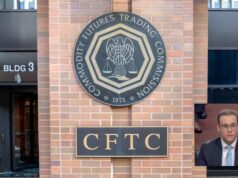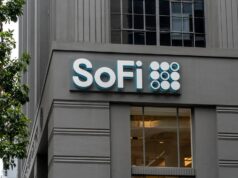Ripple has completed a $1 billion acquisition of GTreasury, a U.S.-based corporate treasury management platform. The deal is Ripple’s largest to date and signals a decisive step beyond blockchain payments. With this move, the company positions itself as a new force in enterprise liquidity and treasury management, linking traditional finance with blockchain infrastructure.
Why Ripple Targets Corporate Treasury
The corporate treasury sector is changing fast. Companies now demand real-time settlement and stronger liquidity visibility. Legacy systems such as SWIFT or ACH often slow down cash movement and leave treasurers with fragmented data.
Ripple’s entry into this market reflects a global push toward blockchain-enabled liquidity. The goal is faster settlements, lower costs, and continuous visibility across accounts worldwide.
What GTreasury Brings to Ripple
Founded in Chicago, GTreasury supports more than 800 multinational clients. Its SaaS platform provides cash forecasting, liquidity planning, and risk management. The system also integrates with major banks and enterprise resource-planning tools.
By acquiring GTreasury, Ripple gains direct access to the enterprise finance ecosystem and its established client base. It also creates a path to introduce blockchain-based liquidity inside large corporations that still rely on traditional treasury providers such as FIS, Kyriba, and SAP Treasury.
How XRP and RLUSD Fit Into GTreasury’s Infrastructure
Ripple will embed its XRP Ledger (XRPL) and RLUSD stablecoin into GTreasury’s platform. Together they create a hybrid system for real-time, tokenized liquidity.
The XRP Ledger acts as a settlement layer, enabling instant inter-company transfers and on-demand liquidity between subsidiaries and banking partners. It replaces slow payment corridors with near-instant transactions.
Meanwhile, RLUSD, Ripple’s regulated U.S.-dollar stablecoin, becomes the liquidity instrument for overnight settlements and digital cash positions. Treasurers can use RLUSD for cross-border payments or short-term investments while keeping accounting transparent and compliant.
These tools allow enterprises to manage both fiat and digital assets in real time. They merge traditional treasury workflows with blockchain efficiency.
>>> Read more: Ripple Hidden Road Acquisition: A Strategic Shift
Ripple’s Expansion Into Enterprise Liquidity
The acquisition transforms Ripple from a payments firm into a full-scale enterprise finance provider. It follows a wider trend in fintech where companies combine tokenized liquidity solutions with corporate finance systems.
Ripple’s CEO Brad Garlinghouse called the deal “a step toward connecting every corner of enterprise finance through blockchain transparency and instant liquidity.”
By combining GTreasury’s analytics and connectivity with Ripple’s blockchain settlement tools, Ripple could compete directly with established treasury providers while offering faster and more transparent liquidity management.
Market Impact and Institutional Outlook
Analysts see this as Ripple’s bid to deepen institutional adoption of blockchain finance. Integrating the XRP Ledger and RLUSD stablecoin into GTreasury’s ecosystem could accelerate the use of tokenized cash equivalents among Fortune 500 companies.
The deal also highlights the growing overlap between decentralized and traditional finance. As Ripple enters a space long dominated by legacy providers, it brings blockchain-native speed and traceability.
In time, RLUSD could become a standard tool for corporate liquidity, turning Ripple into both a liquidity provider and a compliance partner for global businesses.
>>> Read more: Ripple Rail Acquisition: $200M Boost for RLUSD Stablecoin
The Ripple GTreasury acquisition is more than a $1 billion deal; it marks a redefinition of Ripple’s role in global finance. By embedding XRP Ledger settlement and RLUSD liquidity into GTreasury’s infrastructure, Ripple moves closer to uniting corporate treasury management with blockchain innovation.
What started as a blockchain payments company may soon become the backbone of real-time enterprise liquidity worldwide.
Readers’ frequently asked questions
How will GTreasury’s platform benefit from Ripple’s XRP Ledger integration?
GTreasury will gain blockchain-based settlement capabilities through the XRP Ledger, allowing corporate clients to move funds between accounts or subsidiaries in real time. This reduces reliance on traditional banking rails like SWIFT and improves visibility into global cash positions.
What role will RLUSD play in corporate treasury operations?
RLUSD will serve as a regulated U.S. dollar stablecoin for liquidity management, settlements, and short-term cash positions. Corporate treasurers can use it as a stable, blockchain-based alternative to holding idle fiat balances while ensuring compliance and transparency.
Does the acquisition mean corporations will start using XRP directly?
Not necessarily. XRP will power the underlying settlement network, but most enterprises will interact with the technology through GTreasury’s interface. XRP enables liquidity and cross-border transfers, while RLUSD will handle day-to-day transactions and balances.
What Is In It For You? Action items you might want to consider
Map pilot use-cases and ROI for XRPL/RLUSD
Shortlist one or two treasury workflows, such as intercompany transfers, cross-border AP/AR, or cash pooling, to pilot via GTreasury with XRPL and RLUSD. Set baseline KPIs for settlement time, fees, FX spread, and reconciliation time to quantify impact.
Prepare policy and controls for stablecoin operations
Align finance, tax, and audit on RLUSD accounting treatment, wallet custodianship, approval limits, and reconciliation procedures. Draft a pilot SOP with de-minimis exposure limits, segregation of duties, and a rollback plan.
Verify connectivity and sandbox readiness
Confirm ERP and bank connectors for GTreasury with XRPL/RLUSD flows, whitelist counterparties, and open a sandbox. Run a week of test transactions between two subsidiaries and track success metrics and migration criteria.










